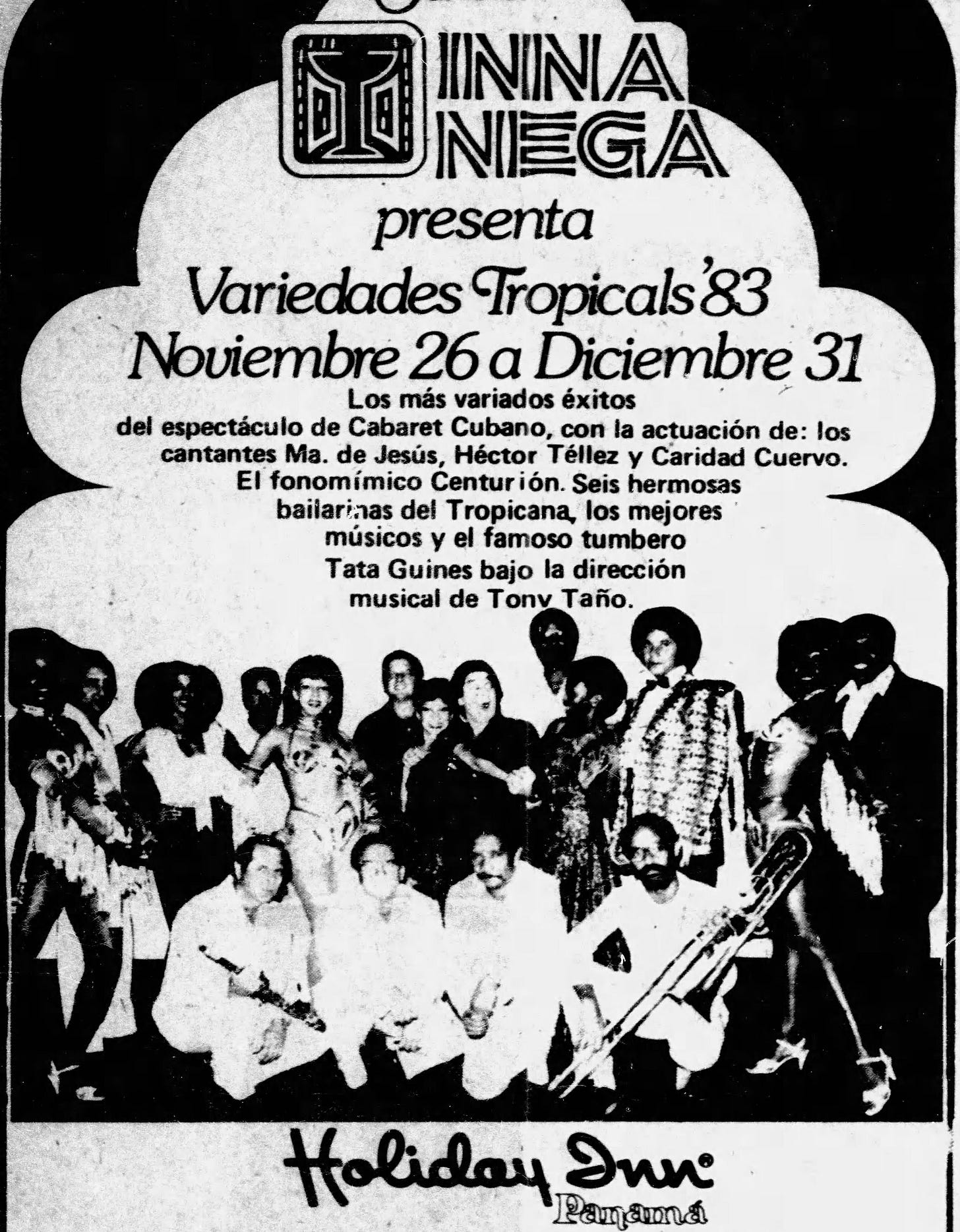Caridad Cuervo’s first album, Caridad Cuervo Canta (Caridad Cuervo Sings), was released on Havana’s Panart label in 1958.
She was twelve years old.
The tween singer demonstrated her natural swing and precocious vocal command on tracks that include “La Rumba es Mejor” with Silvio Contreras’ band, and the guaracha “Tambo Africano,” with Afro-Cuban percussion group Yoyo Castellano y su Conjunto.
Read down to listen to a playlist of songs sung by Caridad Cuervo
An unexpected pleasure on this album is Cuervo’s bubbly version of American crooner Frankie Avalon’s “Venus,” performed to the rhythm of the cha-cha-chá.
Then, and throughout her career, Cuervo was compared to Celia Cruz.
Cuervo debuted at the age of six on “La Corte Suprema de Arte” (“The Supreme Court of Art”), the same radio talent show on which Cruz had frequently appeared when she was a teenager.
When Cuervo sang on that popular program on Havana’s CMQ station in 1952, she performed a schmaltzy ballad with a dramatic Afro beat called “Camino de Sahara,” which had been recorded by the Spanish singer Pepe Reyes with the Conjunto Luis Santi for Panart. A better version was by La Sonora Matancera, sung by Celia Cruz, released with the title “Zahara” on the Seeco label in 1952 - it must of been a hit in Havana right at the time that Cuervo sang it on the radio show.
Cuervo, whose voice belied her years, was quickly embraced as a novelty act. Some called her a Celia Cruz imitator, but she was best known as “la niña artista.” (“the little girl artist.”)
The similarity of Cuervo’s budding voice to Celia’s was so endearing to audiences that rumors began to circulate that Cuervo was in fact Celia’s secret love child, as recalled in an essay written by Henry Puente on the blog Nostalgia Cubana.
Cruz did act as something of a mentor to Cuervo, and the child singer had opportunities to perform with the glamorous Cruz and Sonora Mantancera on radio and television.


This recording on Youtube captures Cuervo singing on the radio with La Sonora Matancera:
Cuervo earned another nickname when at one point she was banned from working on TV because of her minor status. She was called “television’s prohibited voice.”
While Celia Cruz later went into exile, Cuervo, still just a teenager, remained in Havana. She released a second album in 1961 on the Cuban label Maype (which would afterward relocate to the United States). But the young singer seems to not have recorded a solo album again until her mature voice was captured on the album Caridad Cuervo with Conjunto Canay, which came out on the Cuban State record label EGREM in 1980.
One explanation, or perhaps a conspiracy theory, comes from Henry Puente in his post on the Nostalgia Cubana website. He writes that Cuervo was effectively blacklisted by the Cuban government for a time because of her similarities to Celia Cruz, who became a persona non grata in Cuba after she went into exile.


Cuervo would invigorate her career with a soul-sister image and, increasingly, her own vocal identity, which included sultry boleros, Afro-Cuban ritual music and country-flavored songs. But her repertoire largely remained aligned with the music of Celia Cruz: guarachas and rumbas, with arrangements in synch with the evolving times. Among other popular songs, she had a hit with “Chicha que limoná,” written by Pepe Longarela, a Cuban rock-and-roll pioneer. And don’t miss her smoking version of “Babalú” in the playlist below!
Cuervo began to perform regularly in the Club Tropicana stage show, with which she also toured internationally. In Havana, she recorded with Pachito Alonso and other leading musicians. Interestingly, a 1995 compilation, “Hoy canto a Cuba,” was put out by the Fania imprint Barbaro (which also re-released albums by Celia Cruz and the Sonora Matancera.)




In 1983, Cuervo appeared as an opening act for what press deemed “a controversial concert” by the famed Orquesta Aragon at New York City’s Beacon Theater. “Cuban exile organizations have been planning a massive demonstration outside the theater,” wrote a New York Daily News reporter. The critics of the July concert expressed that “the 11-member Orquesta Aragon, which played long before Castro came to power, has several new members and has turned into a vehicle for Communist propaganda.”
According to The Miami Herald, the theater’s air conditioning system was sabotaged by the protestors. While about 60 people demonstrated outside the venue, the musicians and a three-quarter capacity crowd-which included conguero Mongo Santamaría seated in the front row-sweated through the show in the sweltering theater on a night when the temperature reached 100 degrees.
Later that year, Cuervo was singing seven nights a week at the Holiday Inn in Panama City, part of a revue that included conga player Tata Guines and dancers from the Tropicana.
Here is Cuervo performing with the Conjunto Rumbavana, apparently captured in Stockholm that year:
In the undated video below, which must have been sometime in the 1990s, not long before Cuervo’s death, she’s fabulous, singing together to the rhythm of timba with the equally fabulous Haila Mompié (best known as a vocalist with the group Bamboleo) on the Cuban TV show “Su noche con Alfredo Rodríguez.”
Caridad Cuervo died on December 22, 1998 at the age of 52. The official cause was a brain hemmorhage, according to Cuba’s Prensa Latina news agency. Cuervo’s old friend and collaborator Pepe Longarela would later emotionally reveal on a Miami radio program that she had died of AIDS. (Her name also appears on a list of artists who died of AIDS-related causes on the website Ecured.)
Listen to a career retrospective playlist of songs sung by Caridad Cuervo:
On Qobuz:
On Spotify:
Further listening:
Rum and Coca-Cola
A cocktail mix of cosmpolitan tunes, crossing Cuban rhythms with classics of the Great American Songbook. Irving Berlin meets Bola de Nieve, Leonard Bernstein meets La Lupe, Ray Barretto and Bobby Sanabria…Federico Britos fills your heart with his violin. And, surprise! Machito plays the “Dragnet” theme. I hope that these songs …












